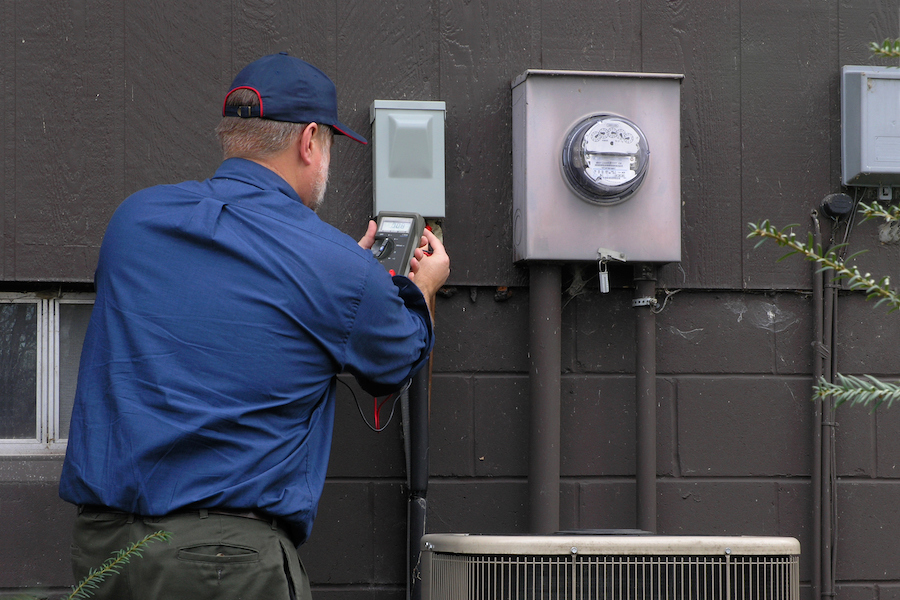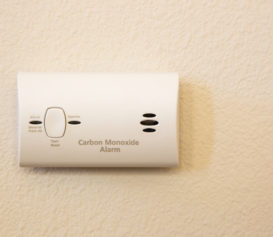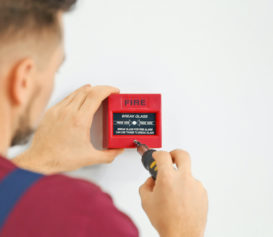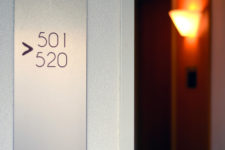Local Law 157 of 2016 covers required natural gas detectors in NYC residential buildings. The DOB has finally approved rules outlining installation and location specifics following the release of the NFPA standard 715 in 2022. Here’s what you need to know:
What Is Local Law 157 of 2016?
Local Law 157 (linked here) requires installation of natural gas alarms in residential properties:
(c) Provide and install one or more approved and operational natural gas detecting devices in accordance with section 908.10 of the New York city building code or section 28-315.2.3 of the code, as applicable, or, in the alternative for class B multiple dwellings, provide and install a line-operated zoned natural gas detecting system with central annunciation and central office tie-in for all public corridors and public spaces, pursuant to rules promulgated by the commissioner of buildings or by the commissioner in consultation with the department of buildings and the fire department;
Devices must also be periodically replaced upon expiration of its useful life, or if stolen, removed, missing, or rendered inoperable.
Natural gas detecting devices have been grouped together in this new law with some requirements for smoke and carbon monoxide detectors, including the requirement to post or provide a notice. Specifically, the law details that owners must do the following if natural gas detectors are required.
Owners must “provide to at least one adult occupant of such dwelling unit information relating to:
- (i) the risks posed by carbon monoxide poisoning and, if natural gas detecting devices are required to be installed in such dwelling unit by rules promulgated by the commissioner of buildings, the risks posed by natural gas leaks,
- (ii) the testing and maintenance of smoke detecting devices, carbon monoxide detecting devices and, if natural gas detecting devices are required to be installed in such dwelling unit by rules promulgated by the commissioner of buildings, natural gas detecting devices,
- (iii) what to do if such devices alert,
- (iv) the useful life of such devices,
- (v) the owner’s duty to replace such devices pursuant to article 312 of title 28 and
- (vi) the occupant’s duty to maintain and repair such devices that are battery-operated and within such occupant’s dwelling unit and replace any or all such devices within such dwelling unit that are stolen, removed, found missing or rendered inoperable during such occupant’s occupancy of such dwelling unit; provided that the information provided in accordance with this paragraph may include material that is distributed by the manufacturer or material prepared or approved by the department of buildings; except that this paragraph shall not apply to class B multiple dwellings or smoke detecting devices in private dwellings;”
Generally, residential requirements for smoke and carbon monoxide detectors are outlined here by HPD – we’ll let you know if this changes to include natural gas detectors. We’ll also share any sample notices to residents if and when they’re available from the department.
Details On The Final Rule
The rules clarifying requirements were initially proposed in 2023 with a comment period ending in November. Here’s what’s outlined in the final rule, published February 14th, 2024:
Properties Covered By The Rule
- Natural gas alarms must be installed in private dwellings, class A multiple dwellings, and class B multiple dwellings
- These requirements do not apply to buildings that do not have gas piping or gas service
- In private dwellings and class A multiple dwellings, one or more natural gas alarms must be installed in each dwelling on or before May 1, 2025
- In class B multiple dwellings, one of the following must happen on or before May 1, 2025:
- One or more natural gas alarms must be installed in each dwelling
- A line-operated zoned natural gas detecting system, designed in accordance with NFPA 715-2023 by a registered design professional, must be installed in all public corridors and public spaces
Device Requirements
Single or multiple station alarms, defined in NFPA 715, must meet all of the following requirements:
- The alarm must be manufactured in accordance with NFPA 715-2023, Standard for the Installation of Fuel Gases Detection and Warning Equipment
- Where a fuel-gas burning appliance is installed within a dwelling, the gas alarm must be installed in the same room as the appliance
- The alarm must be located at least 3 feet, but not more than 10 feet from the appliance, measured horizontally
- The gas alarm must be installed on either the ceiling, or a wall
- Where installed on a wall, the alarm must be located not more than 12 inches from the ceiling
- Exception (created based on feedback to the proposed rule): Where the existing space does not allow for installation at least 3 feet from a fuel-gas-burning appliance, or the manufacturer’s instructions or NFPA 715-2023 require installation in a different location, alarm installations must be placed in accordance with the manufacturer’s or the NFPA 715 location requirements
- The alarm must be labeled with the name of the manufacturer
- The alarm must be listed and labeled with either UL 1484 or UL 2075 as applicable
- The alarm must be kept in good working order
Installation Requirements
These were also impacted by commentary on the proposed rule. Here’s who can install these devices:
- Natural gas alarms must be installed by a New York City Licensed electrical contractor, who obtains all required permits
- Exception: Natural gas alarms that are powered either by battery or by plug-in AC receptacle may be installed by other than a licensed electrical contractor, including but not limited to the building owner, building maintenance personnel, or the dwelling unit occupant.
There are also some requirements related to electrical power – you can see the full details here, in the final rule.
What’s Next?
The big due date for compliance is May 1, 2025. Owners and managers can start installation now to ensure all dwellings comply on or before this date. You may also be able to take advantage of various programs offered from ConEd and other providers.
There may be future details on enforcement here – whether or not violations will be issued for noncompliance, by which agency, and if any fines will accompany them. Stay tuned for updates.
We recommend connecting with your electrical contractor (depending on your needs and/or plans), and tracking installation for each dwelling unit. You can do this using the InCheck Mobile app (including pictures with dates and times saved), and Compliance Manager, tracking portfolio-wide completion to 100% before next May. Reach out to your Customer Success Manager to enable tracking and make sure you’re set for every required dwelling.




